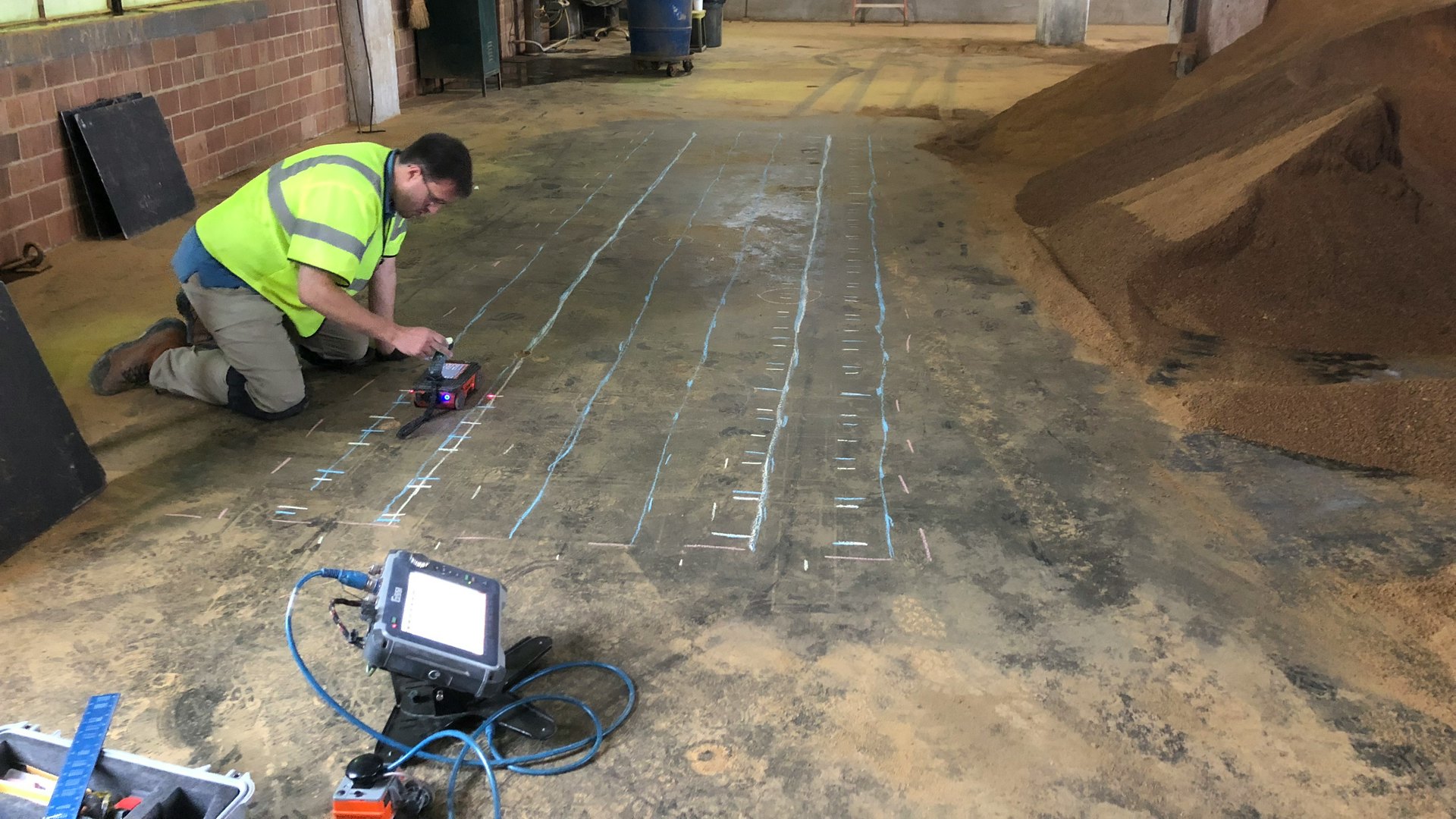Beyond the Surface Area: Leveraging Advanced Concrete Scanning Techniques for Unmatched Accuracy and Insight
Advanced concrete scanning methods have actually emerged as crucial tools in this quest, using a glimpse underneath the surface area to introduce a world of critical insights. By utilizing sophisticated technologies, experts can reveal abnormalities, assess the condition of concrete frameworks, and make educated choices that form the course of projects.
Relevance of Advanced Concrete Scanning
The value of utilizing advanced concrete scanning methods hinges on the unmatched accuracy they provide for identifying sub-surface abnormalities and ensuring structural integrity. By employing cutting-edge modern technologies such as ground-penetrating radar (GPR), electromagnetic induction, and advanced finder imaging, construction experts can dig beneath the surface of concrete frameworks with a degree of precision that much exceeds standard examination approaches. Concrete Scanning. These strategies allow the recognition of covert risks like rebar corrosion, voids, conduits, or post-tension wires that can jeopardize the stability and safety of a structure with time
In addition, progressed concrete scanning supplies indispensable understandings into the total condition of a concrete element without the demand for intrusive steps, minimizing the threat of triggering damages during the assessment procedure. The capability to pinpoint the specific place and depth of prospective issues permits targeted repair services and maintenance, inevitably extending the lifespan of the structure and optimizing its efficiency. Basically, the relevance of sophisticated concrete scanning can not be overstated in the world of building and construction and facilities maintenance, where accuracy and reliability are vital.
Kinds Of Cutting-Edge Technologies

Abnormalities and Flaw Detection

Along with GPR, concrete scanning strategies like thermography and impact-echo testing are also efficient in detecting abnormalities and problems. Thermography uses infrared modern technology to recognize variants in surface area temperature level, indicating potential areas of issue such as delamination or wetness ingress. On the other hand, impact-echo testing involves analyzing acoustic reactions to find spaces, splits, and various other flaws within the concrete. By leveraging these sophisticated methods, experts can proactively deal with structural concerns, guaranteeing the long life and safety and security of concrete frameworks.
Assessing Concrete Problem
Exactly how can designers properly assess the problem of concrete frameworks to ensure their longevity and safety? Numerous sophisticated concrete scanning strategies are employed for this function. Ground-penetrating radar (GPR) is frequently made use of to evaluate the interior framework of concrete, spotting spaces, splits, and various other anomalies that may Read Full Report jeopardize its toughness.
Moreover, visual assessment continues to be a fundamental part of concrete condition evaluation. Designers visually take a look at the surface area for indicators of degeneration, such as spalling, splitting, or staining. Incorporating non-destructive screening approaches with aesthetic evaluations enables for a thorough evaluation of concrete condition, allowing designers to determine prospective concerns early on and execute timely maintenance or repair work. By leveraging these sophisticated methods, engineers can guarantee the long-lasting toughness and safety and security of concrete frameworks.
Enhancing Decision-Making Procedures
In the world of infrastructure monitoring, maximizing decision-making processes is crucial for guaranteeing the effective upkeep and long life of concrete structures. Enhanced decision-making procedures in concrete monitoring include utilizing innovative scanning methods to gather thorough data on the problem of frameworks. By leveraging innovations such as ground-penetrating radar and 3D imaging, stakeholders can make informed choices concerning substitute, repair, or support methods.
These progressed scanning methods give vital understandings into the interior structure of concrete, identifying potential concerns such as voids, splits, or rust that might not be visible on the surface area. This degree of detailed info permits proactive maintenance preparation, reducing the risk of structural failings and raising the overall lifespan of concrete structures.
Furthermore, by integrating digital paperwork and analysis tools right into the decision-making procedure, stakeholders can track the advancement of concrete Click Here problems with time, making it possible for anticipating upkeep methods and maximizing source allowance. Inevitably, the assimilation of sophisticated concrete scanning methods improves decision-making processes by offering unrivaled accuracy, understanding, and efficiency in infrastructure monitoring.
Verdict
In verdict, progressed concrete scanning methods provide exceptional accuracy and understanding in discovering anomalies, defects, and assessing the problem of concrete structures. By leveraging innovative technologies, decision-making processes can be enhanced, causing more enlightened and effective options for maintaining and fixing concrete facilities. These methods play a crucial duty in making sure the safety and long life of concrete structures, making them a vital tool in the area of building and engineering.
Moreover, look what i found progressed concrete scanning offers invaluable understandings into the general condition of a concrete component without the requirement for intrusive actions, decreasing the danger of creating damage throughout the assessment process - Concrete Scanning. An additional ingenious technology is 3D X-ray scanning, which supplies detailed pictures of the internal structure of concrete, supplying valuable information without the requirement for destructive testing. In Addition, Concrete Cover Meters are used to determine the density of concrete cover over support bars precisely. Boosted decision-making processes in concrete monitoring involve utilizing sophisticated scanning strategies to gather thorough data on the problem of frameworks.In final thought, progressed concrete scanning methods supply unmatched accuracy and insight in detecting anomalies, flaws, and assessing the problem of concrete frameworks